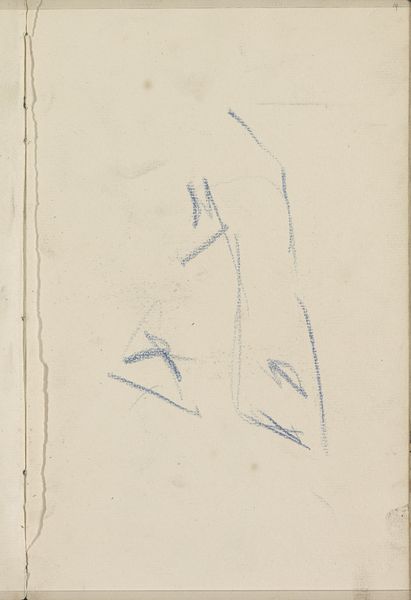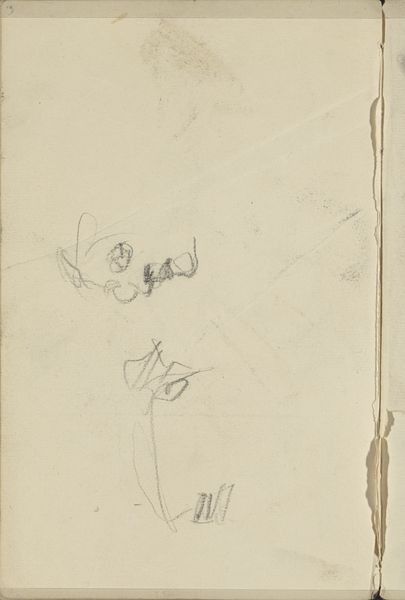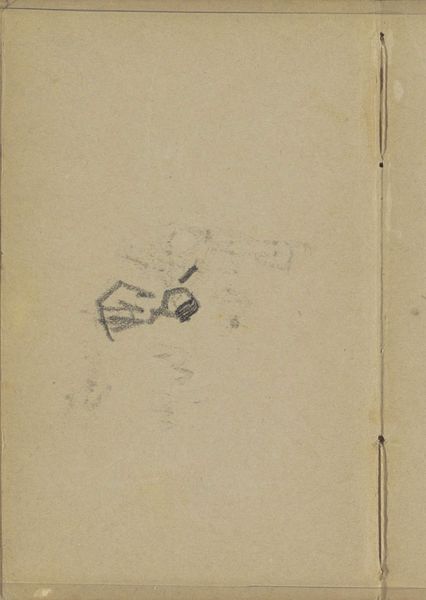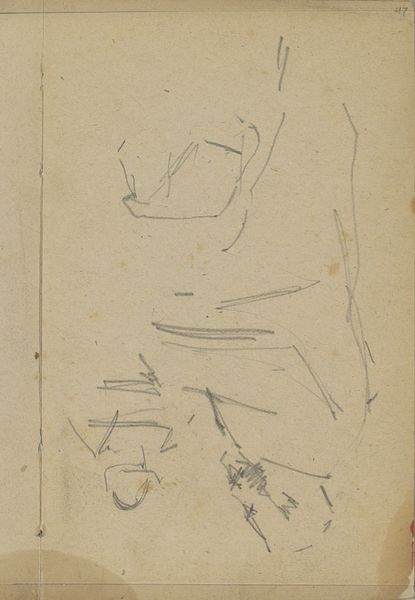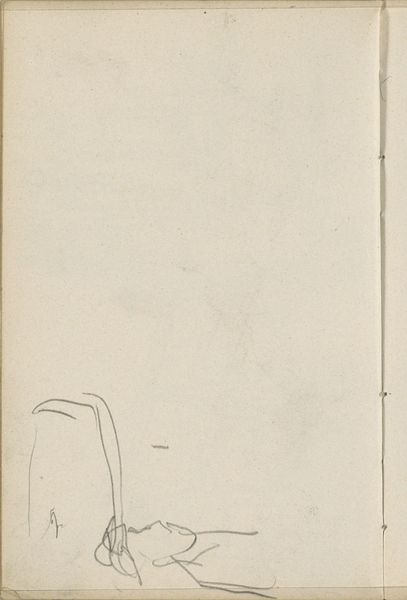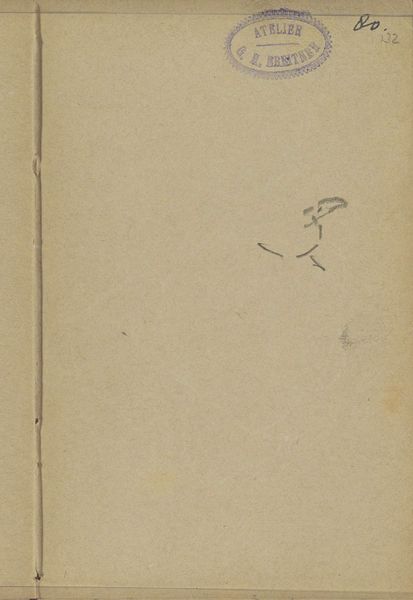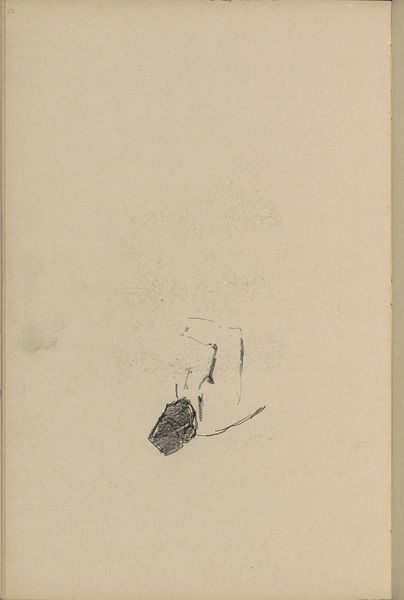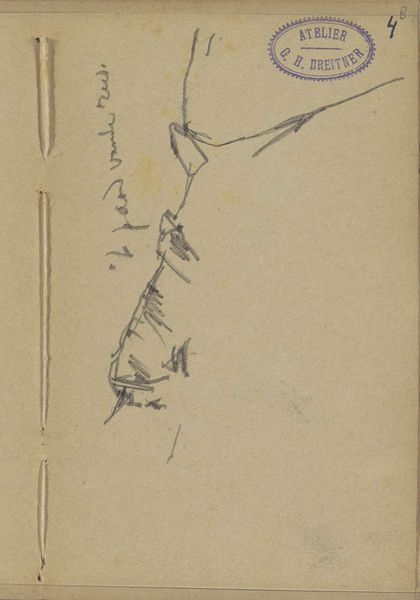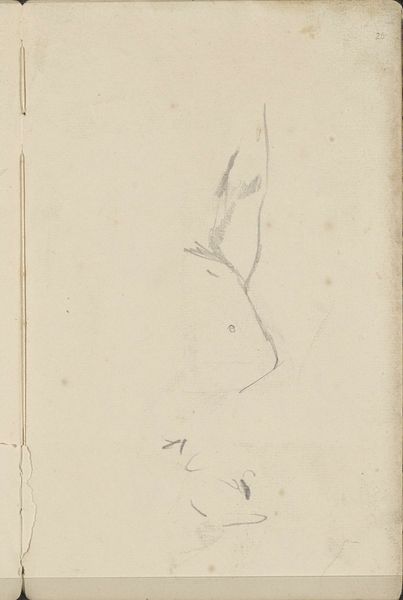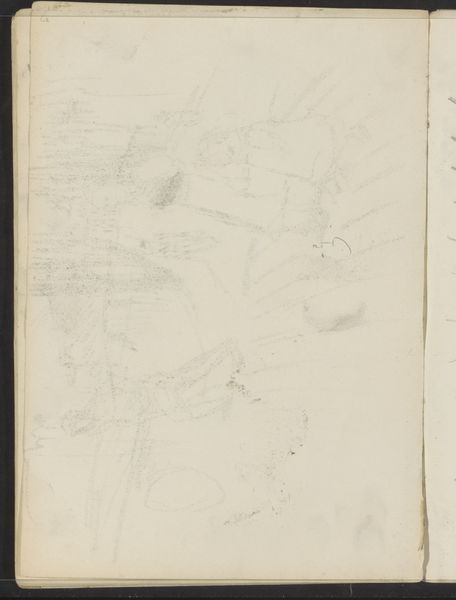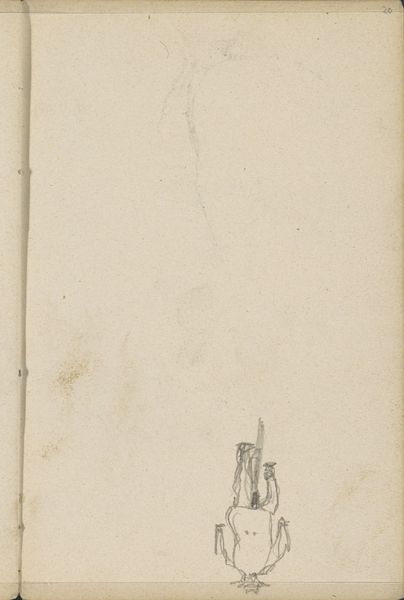
Copyright: Rijks Museum: Open Domain
Editor: This is George Hendrik Breitner’s "Figuurstudie," a graphite and charcoal drawing from around 1886 to 1898. It’s a very simple sketch of what looks like a child, but the sparse use of material makes it quite enigmatic. What do you see in this piece, from your perspective? Curator: Well, immediately, the starkness of the charcoal and graphite on paper points to a certain…economy. It begs the question: what kind of labor went into this piece? Was this a study for something larger, implying a hierarchical relationship between sketch and ‘finished’ work? Or is it valuable as is? Editor: That's an interesting angle. I hadn’t considered the economics of artmaking in this context. Curator: Think about Breitner's Amsterdam: the rapid industrialization, the growing class divisions. Charcoal and graphite were relatively inexpensive materials, accessible perhaps to a wider range of artists, compared to oils. The choice of these media itself speaks to a potential democratization of art production. Editor: So, you're suggesting that Breitner's choice of materials may be a reflection on his social context, his awareness of class and labor? Curator: Precisely. Consider the drawing itself. The quick, almost hesitant strokes suggest a fleeting moment, a snapshot of everyday life. Was Breitner concerned with capturing the immediacy of modern experience, using these accessible materials to quickly record his observations of life around him? Does the sketch’s accessibility challenge traditional ideas about high art? Editor: That’s really fascinating! I would've thought his choice of drawing media was merely practical, but framing it in terms of materials, labor and social access completely shifts my perspective. Curator: Exactly. By focusing on the materials and process, we can uncover hidden layers of meaning, connecting the artwork to broader social and economic forces. Editor: I will definitely think twice about materiality. Thanks! Curator: Likewise, a fresh perspective is always welcome.
Comments
No comments
Be the first to comment and join the conversation on the ultimate creative platform.
